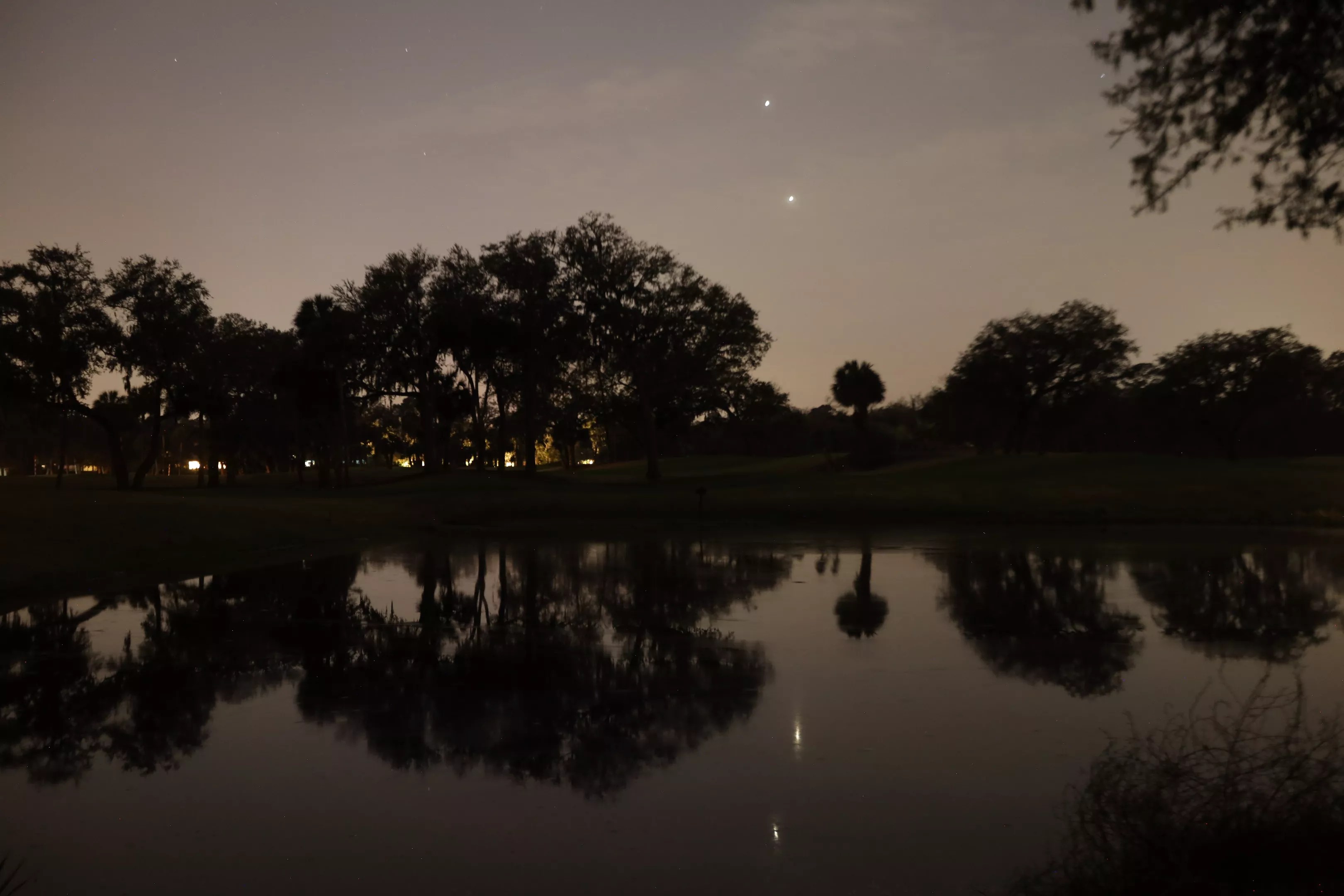

Audio By Carbonatix
It’s a busy season for to be a skywatcher. Besides the recent full moon and this year’s Perseid meteor shower hitting its peak, two of the brightest planets in our solar system will be cozying up.
A planetary conjunction between Venus and Jupiter will occur early Tuesday morning as the two planets will appear like they’re close enough to “kiss.”
Are two of our celestial neighbors getting close enough to collide? Of course not. It will just look that way from Earth thanks. But it’ll be a stunning sight to watch.
Here’s when and where to see the Venus and Jupiter conjunction this week.
Will you step up to support New Times this year?
At New Times, we’re small and scrappy — and we make the most of every dollar from our supporters. Right now, we’re $16,750 away from reaching our December 31 goal of $30,000. If you’ve ever learned something new, stayed informed, or felt more connected because of New Times, now’s the time to give back.
What are those two bright stars in the sky tonight?
Well, they’re not stars. They’re Venus and Jupiter, two of the brightest planets in our solar system.
What is a planetary conjunction?
A planetary conjunction occurs when two planets align in our sky, appearing like they’re side by side in close proximity. It’s all a matter of perspective, though. In reality, the planets are millions of miles apart.
How often do planetary conjunctions occur?
Planetary conjunctions happen several times throughout each year. In the case of Venus and Jupiter, the two planets align roughly every 13 months, according to Space.com.
How close will Venus and Jupiter be in the sky?
The planets will appear to be approximately 0.86 of a degree apart, per Space.com. (That’s less than twice the relative diameter of the moon at the moment.) So pretty close from our perspective on Earth.
When can you see the Venus and Jupiter conjunction this week?
Venus and Jupiter will be at their closest to each other approximately 45 minutes before dawn on Tuesday morning. In Arizona, that means you should look starting around 4:30 a.m. The planets will continue to appear close together for several days afterward, but they’ll be closest on Aug. 12.
Where should you look to see Venus and Jupiter?
In the eastern/northeastern sky just above the horizon.
Will you need a telescope or binoculars?
Only if you want to get a closer view of either Venus or Jupiter. Both planets will be bright enough to be seen by the naked eye.